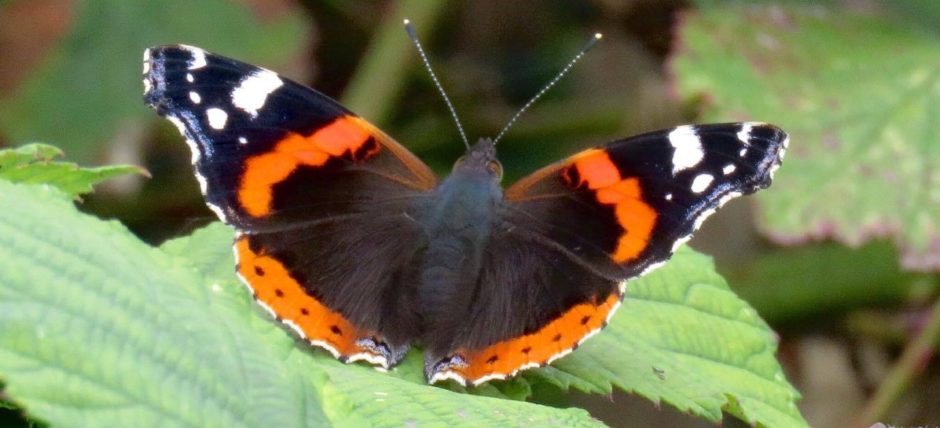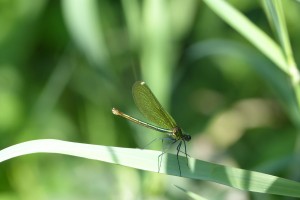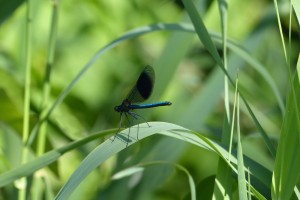Local bird-watchers Ian Stewart and Ralph Todd turned their attentions – and lenses – to Dragonflies and Damselflies at Foots Cray Meadows on Friday (July 18th) with fantastic results. Eleven species were seen, two or three of which are new ‘formal’ site records, taking the total here to 14, on a par with Crossness. It is likely that the excellent new ponds created a couple of years ago have played a part in increasing this location’s Odonata fauna.
The most exciting find was Four-spotted Chaser (Libellula quadrimaculata), for which a photograph was obtained. This confirms the presence of this species in the Borough, the only previous record being from Crossness sometime before 2009. Ralph says he’s also had it in his garden.
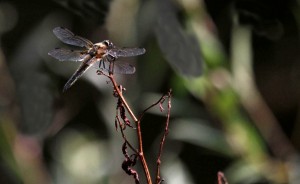
Four-spotted Chaser at Foots Cray Meadows – a new site record for a species that is uncommon across Kent, particularly in the west, and is more typically found around acid waters than the chalk of the Cray. (Photo: Ralph Todd).
Southern Hawker, Broad-bodied Chaser and Black-tailed Skimmer, which were also seen, were predicted to occur here in the ‘Checklist of the Dragonflies and Damselflies of the London Borough of Bexley’, but someone still needs to go out and look and, more importantly, submit records to an appropriate authority!
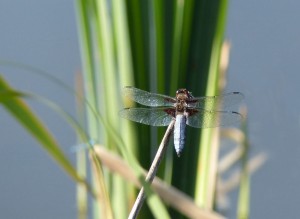
Male Broad-bodied Chaser. This species is quick to colonise new ponds like those recently created on the meadows. (Photo: Ralph Todd).
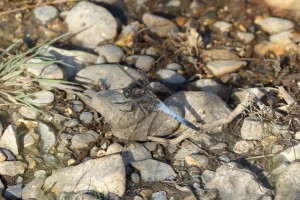
Male Black-tailed Skimmer, exhibiting its classic behaviour of resting on bare ground close to a waterbody. (Photo: Ralph Todd).
Other Dragonflies seen were Emperor, Brown Hawker and Common Darter. Ruddy Darter was seen the day before.
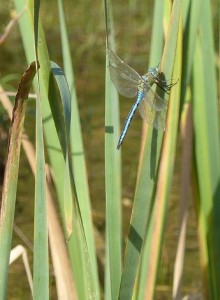
A male Emperor Dragonfly takes a break from patrolling a pond at Foots Cray Meadows. (Photo: Ralph Todd).
Damselflies recorded were Banded Demoiselle, Common Blue, Blue-tailed and Azure.
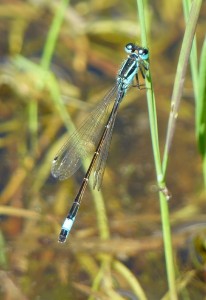
Blue-tailed damselfly at Foots Cray Meadows. This image nicely illustrates the bi-coloured pterostigma in this species (the small coloured cell near the end of the wing, on the leading edge). (Photo: Ralph Todd).
Intriguingly, Ian also thinks he saw one of the species of Emerald Damselfly. Emerald itself (Lestes sponsa) is the most likely, not least on the grounds that it has been recorded in the Ruxley gravel pits area in the past. He also reports that he may have seen a White-legged Damselfly, which would be a new Borough record if it could be confirmed. The nearest previous records for this species are half way up the River Darent.
In the meantime, hosting 14 of the probable 18 species in the Borough isn’t bad going, and it’s possible that besides an Emerald, the Large Red Damselfly and Small Red-eyed Damselfly could also be found here. That Checklist is going to need some updating – but that’s what it’s there for, to stimulate more searching and more recording to improve our knowledge of Bexley’s wildlife.
